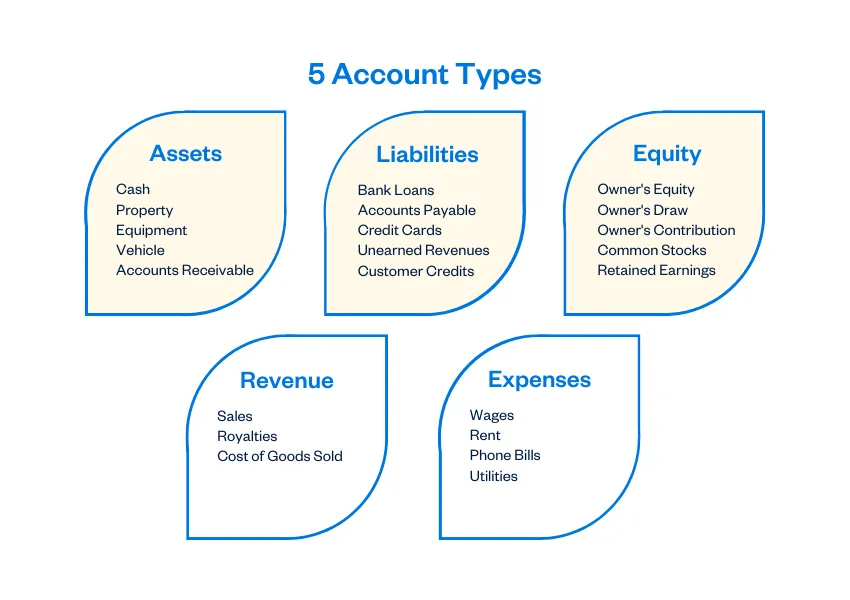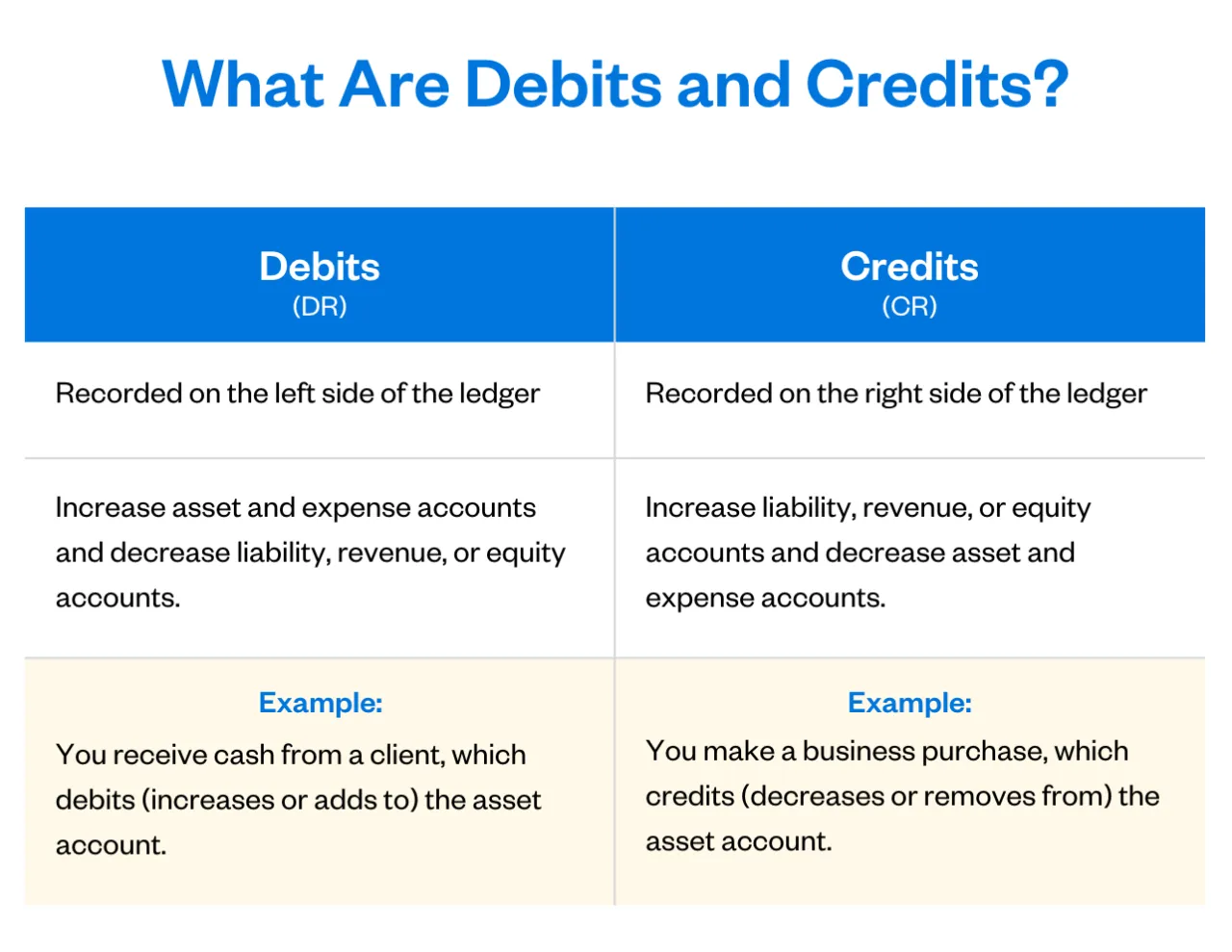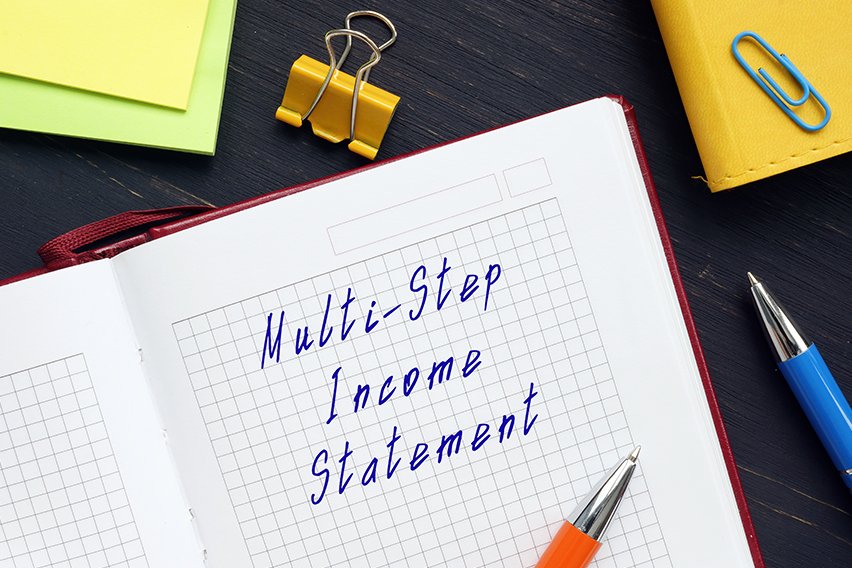What Is Double-Entry Bookkeeping? A Simple Guide for Small Businesses

Double-entry bookkeeping is an accounting system where every transaction is recorded in two accounts: a debit to one account and a credit to another. For example, if a business takes out a $5,000 loan, the cash (asset) account is debited to $5,000 and the outstanding debt (liability) account is credited $5000. This means cash and outstanding debt are now increased by the same amount.
Table of Contents

What Is Double-Entry Bookkeeping?
Double-entry bookkeeping is an accounting method where each transaction is recorded in 2 or more accounts using debits and credits. A debit is made in at least one account and a credit is made in at least one other account. The total debits and credits must balance (equal each other).
For example, a copywriter buys a new laptop computer for her business for $1,000. She credits her technology expense account for $1,000 and debits her cash account for $1,000. This is because her technology expense assets are now worth $1000 more and she has $1000 less in cash.
Who Uses the Double-Entry System?
For businesses in the United States, the Financial Accounting Standards Board (FASB), is a non-governmental body. They decide on the generally accepted accounting principles (GAAP), which are the official rules and methods for double-entry bookkeeping.
The International Accounting Standards Board (IASB) is a non-governmental body that sets the International Financial Reporting Standards (IFRS) for official accounting rules and methods used outside of the United States.
Public companies must use the double-entry bookkeeping system and follow any rules and methods outlined by GAAP or IFRS (the differences between the two standards are outlined in this article).
Small businesses with more than one employee or looking to apply for a loan should use double-entry accounting. This system is a more accurate and complete way to keep track of the company’s financial health and how fast it’s growing.
People also ask:
What Are the Rules of Double-Entry Bookkeeping?
There are 3 major components to the double-entry method in bookkeeping. They are:
- Every business transaction or accounting entry has to be recorded in at least two accounts in the books.
- For each transaction, the total debits recorded must equal the total credits recorded.
- Total assets must always equal total liabilities plus equity (net worth or capital) of a business. Both sides of this equation must be the same (they must balance).
The Accounting Equation
The above becomes clearer when we look at the accounting equation, one of the fundamental principles of accounting. Both sides of this equation must be the same. If they’re not, there’s a mistake in the books. The equation is: Assets = Liabilities + Equity

So, if assets increase, liabilities must also increase so that both sides of the equation balance.
For example, an e-commerce company buys $1,000 worth of inventory on credit. Assets (the inventory account) increase by $1,000 and liabilities (accounts payable) increase by $1,000.
So both sides of the accounting equation are the same. This is reflected in the books by debiting inventory and crediting accounts payable.
What Are the Different Types of Accounts?
There are 5 types of accounts that must always be used in double-entry accounting:
- Asset accounts record the monetary value of what a business owns, such as the money in its checking account, tools/equipment, and buildings
- Liability accounts record the amount a business owes on things like lines of credit or a mortgage
- Equity is the difference between Assets and Liabilities (also known as the book value of the business)
- Income accounts record money coming in, like revenue
- Expense accounts record what you’ve spent money on, such as payroll and advertising
The 5 types of accounts make up your chart of accounts. The chart of accounts is a different category group for the financial transactions in your business and is used to generate financial statements.

What are Debits and Credits?
In double-entry bookkeeping, debits and credits are terms used to describe the 2 sides of every transaction. Debits are increases to an account, and credits are decreases to an account.
When all the accounts in a company’s books have been balanced, the result is a zero balance in each account. In other words, the debits equal the credits.
Debits
- Recorded on the left of a ledger sheet
- Increase the asset and expense accounts or decrease revenue, equity, and liability accounts
- The monetary value is known as a debit balance
- Example: You pay money toward a bank loan, which debits (decreases or removes from) the liability account.
Credits
Recorded on the left of a ledger sheet
Decrease asset and expense accounts or increase revenue, equity, and liability accounts
The monetary value is known as a credit balance
Example: You receive payment for a service you provided, which credits (increases or adds to) the revenue account.

Double-Entry Bookkeeping Examples
Let’s look at some examples of how double-entry bookkeeping is used for some common accounting transactions.
Example 1: Business Purchases Using Credit
You purchase $780 worth of inventory on credit. When you make the payment, your account payable decreases by $780, and your cash decreases by $780.
So, in your general ledger, you debit the account payable account (a liability account) and credit the cash account (an asset account).

When you receive the $780 worth of inventory for your business, your inventory increase by $780, and your account payable also increases by $780.
In your ledger, you debit the inventory (asset) account and credit the account payable (liability) account.

Example 2: Receiving a Business Loan
You are approved for a business loan of $9,500. When you receive the money, your cash increases by $9,500, and your loan liability increases by $9,500.
In your ledger, you debit the cash (asset) account and credit the loan payable (liability) account.

Example 3: Paying for Business Expenses
You pay $20 for a website domain for your business. When you pay for the domain, your advertising expense increases by $20, and your cash decreases by $20.
In your ledger, you debit the advertising expense account and credit the cash account.

Example 4: Making a Capital Contribution
You invested $15,000 of your personal money to start your catering business. When you deposit $15,000 into your checking account, your cash increases by $15,000, and your equity increases by $15,000.
In your ledger, you debit the cash (asset) account and credit the capital (equity) account.

Why Is Double-Entry Bookkeeping Important?
Very small, new businesses may be able to make do with single-entry bookkeeping. But double-entry bookkeeping delivers many advantages.
This article compares single and double-entry bookkeeping and explains the pros and cons of both systems.
Delivers a Complete Financial Picture
Small businesses can use double-entry bookkeeping as a way to monitor the financial health of a company and the rate at which it’s growing. This bookkeeping system ensures that there is a record of every financial transaction, which helps to prevent fraud and embezzlement.
In fact, a double-entry bookkeeping system is essential to any company with more than one employee or that has inventory, debts, or several accounts.
Businesses that meet any of these criteria need the complete financial picture double-entry bookkeeping delivers. This is because double-entry accounting can generate a variety of crucial financial reports like a balance sheet and income statement.
Helps Companies Make Better Financial Decisions
Double-entry bookkeeping’s financial statements tell small businesses how profitable they are and how financially strong different parts of their business are. You can see how you’ve spent money and how your business is doing.
The double-entry accounting system can help you make better financial decisions by providing accurate and timely information about your business’s financial status.
This information can be used to make informed decisions about where to allocate resources, how much debt to take on, and whether to invest in new projects.

Reduces Bookkeeping Errors
When you generate a balance sheet in double-entry bookkeeping, your liabilities and equity (net worth or “capital”) must equal assets. If they don’t, you know your books are wrong.
This failsafe tells businesses if their journal entries are wrong. This accounting method also makes it easier to spot errors and correct them. The double-entry system is also a more transparent way to keep your books and helps keep businesses accountable.
Preferred by Investors, Banks, and Buyers
Because the double-entry system is more complete and transparent, anyone considering giving your business money will be a lot more likely to do so if you use this system.
Double-entry bookkeeping produces reports that allow investors, banks, and potential buyers to get an accurate and full picture of the financial health of your business.
How Is Single-Entry Bookkeeping Different?
Single-entry bookkeeping is a record-keeping system where each transaction is recorded only once, in a single account. This system is similar to tracking your expenses using pen and paper or Excel.
To illustrate how single-entry accounting works, say you pay $1,500 to attend a conference. You record the cash going out of your checking account.
This single-entry bookkeeping is a simple way of showing the flow of one account. However, it doesn’t tell you the full story of your finances.
In the example, because you did not record the conference fee expense, it won’t show on your income statement (profit and loss statement). At tax time, your tax preparer won’t be aware that $1,500 is missing from your expenses. You will have missed out on the deduction and overpaid your taxes.
How Do You Start Double-Entry Bookkeeping?
Double-entry bookkeeping is usually done using accounting software. The software lets a business create custom accounts, like a “technology expense” account to record purchases of computers, printers, cell phones, etc. You can also connect your business bank account to make recording transactions easier.
Accounting software also easily generates reports which makes getting ready for tax time and year-end much simpler.
You can hire an accountant and bookkeeper to do your business’s double-entry bookkeeping. Or, FreshBooks has a simple accounting solution for small business owners with no accounting background. You can do it yourself, which makes keeping the books easy.
About the author
Dana Thao is a former accountant and financial analyst turned writer. She has a knack for making complex accounting concepts easy to understand. When she’s not writing about accounting, she can be found creative writing, sipping on green tea lattes, and playing video games with her family.Dana Thao is a former accountant and financial analyst turned writer. She has a knack for making complex accounting concepts easy to understand. When she’s not writing about accounting, she can be found creative writing, sipping on green tea lattes, and playing video games with her family. Website | LinkedIn
RELATED ARTICLES


 How to Create a Multi-Step Income Statement: A Guide to In-Depth Financial Reporting
How to Create a Multi-Step Income Statement: A Guide to In-Depth Financial Reporting The 12 Branches of Accounting: Their Uses and How They Work
The 12 Branches of Accounting: Their Uses and How They Work Cost of Goods Sold: What Is It and How To Calculate
Cost of Goods Sold: What Is It and How To Calculate What Is Unearned Revenue? A Definition and Examples for Small Businesses
What Is Unearned Revenue? A Definition and Examples for Small Businesses W-8BEN-E: Guide for Foreign Entities Doing Business in the U.S.
W-8BEN-E: Guide for Foreign Entities Doing Business in the U.S. Accounting for Sales Tax: What Is Sales Tax and How to Account for It
Accounting for Sales Tax: What Is Sales Tax and How to Account for It